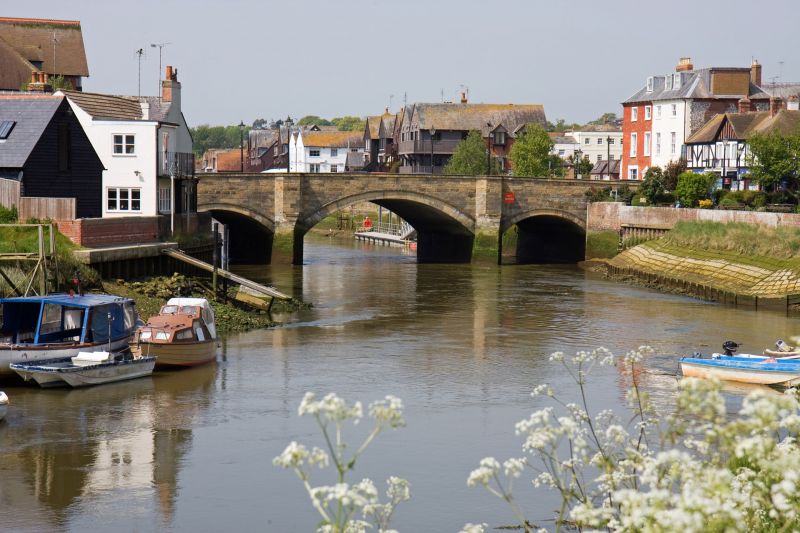Water Quality Test Results of European Lakes and Rivers
Published on by Water Network Research, Official research team of The Water Network in Academic
Despite progress in improving the quality of Europe’s lakes, rivers, coastal waters and groundwater sources, pollution, structures like dams, and over-abstraction remain top threats to their long-term health.
A vast majority of Europe’s water bodies still fail to meet the European Union’s minimum target for ‘good status’, according to a European Environment Agency ‘state of water’ report.

River Arun, England, Representative Image, Source: Public Domain Pictures, Labeled for Reuse
EU Member States have made marked efforts to improve water quality, by improving wastewater treatment and lowering the runoff of pollutants from farmland, according to the EEA report ‘European waters — assessment of status and pressures 2018’. Measures have also been taken to make barriers passable to migrating fish and restore degraded aquatic ecosystems.
While Europe’s ground water bodies, like aquifers, are in good health in most cases, only 40% of monitored lakes, rivers, estuaries and coastal waters achieved the the EU Water Framework Directive’s minimum ‘good’ or ‘high’ ecological status during the 2010-2015 monitoring period, according to the report. The last EEA assessment in 2012 found a similar level of water bodies meeting ‘good’ or ‘high’ ecological status. The EEA assessment also looked at the quantitative state and over-abstraction of Europe’s groundwater and the overall chemical status of water bodies.
The EEA report gives an updated health check on over 130,000 surface and groundwater bodies monitored by EU Member States, based on the data collected and reported from more than 160 so-called River Basin Management Plans covering the period 2010 to 2015.
Read and Download Full Study From The Attachment
Source: European Environment Agency
© European Environment Agency, 2018
Reproduction is authorised , provided the source is acknowledged, save where otherwise stated.
Information about the European Union is available on the Internet. It can be accessed through the Europa server (www.europa.eu).
Media
Taxonomy
- Quality
- Resource Management
- Water Resource Management
- Water Quality
- River Studies
- Lake Management
- River Basin management
- Water Quality Management
- Water Resource Management
- Water Quality Research
2 Comments
-
It is nice to see these.
-
'Europe's waters cry out for help, Member States continue to look the other way', WWF says.
The European Environment Agency (EEA)'s 2018 “State of Water”, estimates that only 40% of European surface waters are currently healthy.
This shows that Member States have not been taking seriously their legal commitment to implement the EU water laws to achieve good status for Europe's water bodies. Instead, they have demonstrated little ambition to deviate from their 'business as usual' mentality.
"The state of our freshwater bodies is shocking. The findings are not surprising, though, given the fact that Member States have been skirting around their legal commitments under the EU's water laws for the best part of two decades. Governments have been avoiding effective delivery on the legally binding objectives and allowed for further deterioration of our rivers and lakes by using (and misusing!) the various exemptions provided for by the EU Water Framework Directive. It's absurd that exemptions seem to have become a norm in implementing the legislation!" said Andreas Baumüller, Head of Natural Resources at WWF's European Policy Office. "We have long been calling for stronger efforts to protect and restore Europe's water resources, and can only hope that this report will act as a wake-up call."
You can read the entire press release by WWF HERE